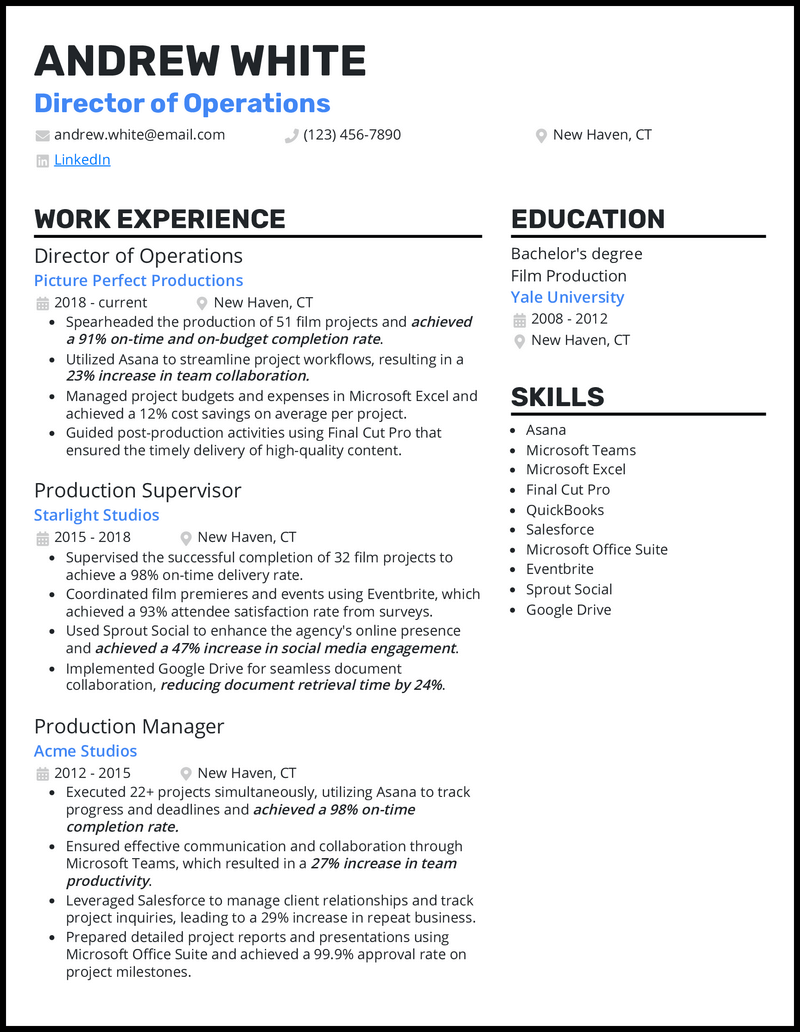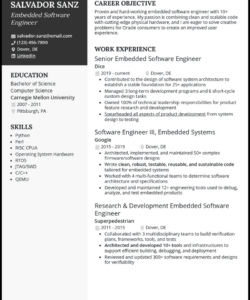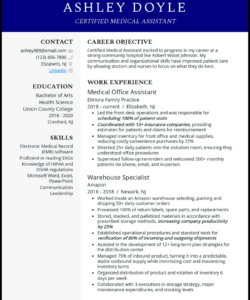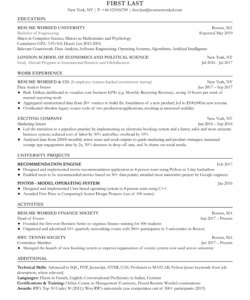Navigating the competitive landscape for a Director of Operations role requires more than just experience; it demands a resume that speaks volumes about your strategic prowess and leadership capabilities. This isn’t just any management position; it is a pivotal role that dictates the very flow and efficiency of an organization. Your resume, therefore, must be a powerful testament to your ability to optimize processes, lead diverse teams, and drive significant business growth.
Crafting such a document can feel overwhelming, especially when you consider the breadth of responsibilities a Director of Operations typically handles. From supply chain management to budget oversight and team development, every aspect needs to be presented concisely yet comprehensively. Fortunately, a well-designed director of operations resume template can provide the perfect framework, guiding you to highlight your most impressive achievements and present a compelling case for your candidacy. It ensures you don’t miss crucial sections and helps maintain a professional, impactful layout.
Crafting Your Director of Operations Resume The Essentials
When you set out to build your Director of Operations resume, think of it as a strategic document designed to capture the attention of busy hiring managers. The very first section, often a professional summary or objective, is your elevator pitch. It needs to be a concise powerhouse, immediately showcasing your most significant career accomplishments and your unique value proposition. Instead of generic statements, aim for impact; highlight years of experience, specific industries, and your core strengths like operational excellence or cost reduction. This initial hook is critical for piquing interest and encouraging the reader to delve deeper into your qualifications.

Following your summary, the professional experience section is where your journey truly shines. This is not merely a list of past job duties; it’s an opportunity to narrate your career trajectory through quantifiable achievements. For each role, consider the challenges you faced, the actions you took, and the tangible results you delivered. Did you streamline a process that reduced lead times by 15%? Implement a new system that saved the company $500,000 annually? Led a cross-functional team that increased productivity by 20%? These are the kinds of specific, data-driven examples that will set your resume apart and demonstrate your direct impact on an organization’s bottom line.
Key Sections to Include
To ensure your resume is comprehensive and easy to navigate, structure is paramount. Beyond the summary and experience, several other sections are vital:
- Core Competencies: A bulleted list of your key skills and areas of expertise. Think about both hard skills like logistics, project management software, and financial analysis, as well as soft skills such as leadership, problem-solving, negotiation, and strategic planning. Tailor these to the specific job description you are applying for.
- Education and Certifications: List your academic degrees, starting with the highest level obtained. Include any relevant certifications, such as Lean Six Sigma, PMP (Project Management Professional), or specific industry qualifications, as these often demonstrate a commitment to continuous improvement and specialized knowledge.
- Awards and Achievements: If you’ve received any professional accolades, recognition for outstanding performance, or led award-winning initiatives, this is the place to highlight them. It adds another layer of credibility and distinction to your profile.
Remember, every element on your resume should reinforce your suitability for a senior operational leadership role.
Making Your Director of Operations Resume Stand Out
Beyond simply including the necessary sections, the true art of a compelling Director of Operations resume lies in how you present your information. One of the most effective strategies is to tailor your resume for each specific job application. Carefully review the job description for keywords, required skills, and responsibilities. Then, strategically weave those exact terms into your resume, especially in your professional summary, core competencies, and experience descriptions. This not only shows you’ve done your homework but also helps your resume pass through Applicant Tracking Systems (ATS) that many companies use to filter candidates.
Quantifying your achievements cannot be stressed enough. Instead of saying "Managed inventory," articulate "Managed inventory operations for a 20-million dollar facility, reducing holding costs by 10% through optimized stock rotation and vendor negotiations." Every claim should ideally be backed by numbers, percentages, or concrete examples of impact. This approach makes your contributions tangible and demonstrates your value in a way that generic statements simply cannot. Hiring managers want to see the direct results of your work, not just a list of your duties.
Furthermore, the visual appeal and readability of your resume are more important than you might think. A clean, professional layout with clear headings, consistent formatting, and appropriate white space makes it easier for recruiters to quickly scan and absorb your information. Avoid overly flashy designs or hard-to-read fonts. Your goal is clarity and professionalism. A well-organized resume implies a well-organized professional, which is precisely the impression you want to convey for a Director of Operations role.
Finally, meticulous proofreading is non-negotiable. Even the smallest typo or grammatical error can detract from your professional image. Read your resume multiple times, and ideally, have someone else review it for any mistakes you might have overlooked. A flawless resume reflects attention to detail, a critical trait for any operations leader. By combining strong content with strategic presentation, you significantly enhance your chances of securing that coveted interview and advancing your career.


